
Oct 28, 2010
Oct 24, 2010
On a Mushroom Photography Safari
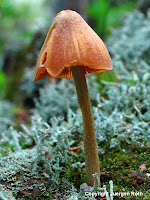 During my last photography tour to magical Acadia National Park in Maine on Mount Desert Island I decided to capture Otter Cliff despite bad weather conditions. The sky was very overcast and cloudy; rain was falling. From the park's loop road I pulled into one of the parking lots near Otter Cliff. Parking was a non issue because of the rain, and most people were exploring the town of Bar Harbor. I choose the last spot at the end of the parking lot and was immediately inspired by the green forest in front of me. Instead of making my way to the granite seacoast to photograph famous Otter Cliff, I climbed up a little ridge and a few yards into the woods. Here I positioned my tripod to capture the forest. Once satisfied, I started walking back towards the parking lot when I noticed this little tiny thing on the forest floor. Protected by moss and roots a 2 inch mushroom was arising. Instantly caught in the moment, I lowered my tripod to floor level without succeeding to achieve an attractive perspective of it. I was forced to take the camera off the tripod and hand-hold the camera while resting it on one of the tripod legs. This field adjustment brought the camera level really low and I achieved a more intimate composition of the little mushroom. In my first photograph I singled out the mushroom using the moss as a backdrop. I then decided to explore different views when I noticed a second mushroom in near distance.
During my last photography tour to magical Acadia National Park in Maine on Mount Desert Island I decided to capture Otter Cliff despite bad weather conditions. The sky was very overcast and cloudy; rain was falling. From the park's loop road I pulled into one of the parking lots near Otter Cliff. Parking was a non issue because of the rain, and most people were exploring the town of Bar Harbor. I choose the last spot at the end of the parking lot and was immediately inspired by the green forest in front of me. Instead of making my way to the granite seacoast to photograph famous Otter Cliff, I climbed up a little ridge and a few yards into the woods. Here I positioned my tripod to capture the forest. Once satisfied, I started walking back towards the parking lot when I noticed this little tiny thing on the forest floor. Protected by moss and roots a 2 inch mushroom was arising. Instantly caught in the moment, I lowered my tripod to floor level without succeeding to achieve an attractive perspective of it. I was forced to take the camera off the tripod and hand-hold the camera while resting it on one of the tripod legs. This field adjustment brought the camera level really low and I achieved a more intimate composition of the little mushroom. In my first photograph I singled out the mushroom using the moss as a backdrop. I then decided to explore different views when I noticed a second mushroom in near distance.I again used
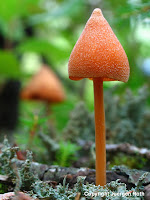 one of the tripod legs to stabilize and minimize camera shaking. I kept the second mushroom completely out of focus and used the roots on the forest ground as leading lines to it. Because of the same color the viewer then returns back to the main mushroom object that completes the viewers journey through the photograph.
one of the tripod legs to stabilize and minimize camera shaking. I kept the second mushroom completely out of focus and used the roots on the forest ground as leading lines to it. Because of the same color the viewer then returns back to the main mushroom object that completes the viewers journey through the photograph.A polarizing filter minimized the glare on the mushroom tips and saturated the forest greens. Aperture in both photographs was set to f/7.1 that resulted in 1/3 and 1/5 seconds exposure time. In the post processing steps I made minimal color and lighting adjustments before sharpening.
Oct 23, 2010
At the Head of the Charles
 The Head of the Charles is a rowing race held on the Charles River in Boston, MA. It is the largest 2 day regatta in the world, with more than 8,000 rowers, 1,700 boats and over 300,000 spectators. With the fall foliage peaking in and around Boston and beautiful clear skies it turns out to be a fantastic weekend for the event.
The Head of the Charles is a rowing race held on the Charles River in Boston, MA. It is the largest 2 day regatta in the world, with more than 8,000 rowers, 1,700 boats and over 300,000 spectators. With the fall foliage peaking in and around Boston and beautiful clear skies it turns out to be a fantastic weekend for the event.Oct 22, 2010
2011 New England's Color Calendar Online
Oct 17, 2010
2011 Nature Calendars Online
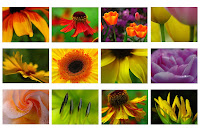 The "Nature’s Color" 2011 calendar features abstract flower photography macros and portraits. It is a collection of twelve of my most beautifully and colorful composed flower photographs.
The "Nature’s Color" 2011 calendar features abstract flower photography macros and portraits. It is a collection of twelve of my most beautifully and colorful composed flower photographs.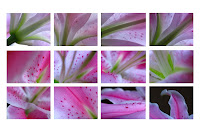 The 2011 "Abstract Lily Fine Art Collection" calendar is a collection of twelve of my most beautifully composed Lily photographs. The calendar features twelve abstract floral macro photographs at its best.
The 2011 "Abstract Lily Fine Art Collection" calendar is a collection of twelve of my most beautifully composed Lily photographs. The calendar features twelve abstract floral macro photographs at its best.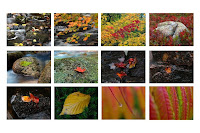 The "Fall Colors" 2011 calendar bis a collection of my most beautifully composed foliage photography featuring fall leaves in their autumn peak colors in close-ups and macros.
The "Fall Colors" 2011 calendar bis a collection of my most beautifully composed foliage photography featuring fall leaves in their autumn peak colors in close-ups and macros.Oct 11, 2010
Photo Tip of The Month - October 2010
 An effective way to lead a viewer into and through a photograph is the use of lines in composition. Naturally when a viewer explores a photograph the eye moves along these lines. Compositional lines successfully used in photography pull the viewer into the photograph, either towards the main subject or through the scenery. Lines can be straight, vertical, horizontal, diagonal, curved or converging. Used effectively each can have a positive impact on our photography, enhancing a photograph and creating a mood.
An effective way to lead a viewer into and through a photograph is the use of lines in composition. Naturally when a viewer explores a photograph the eye moves along these lines. Compositional lines successfully used in photography pull the viewer into the photograph, either towards the main subject or through the scenery. Lines can be straight, vertical, horizontal, diagonal, curved or converging. Used effectively each can have a positive impact on our photography, enhancing a photograph and creating a mood.Oct 5, 2010
Oct 3, 2010
At Cape Cod Herring River
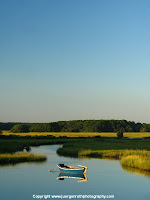 This August I decided to return to Cape Cod and photograph a red boat that I discovered last summer. In my previous dinghy photograph I took advantage of the early morning light while now the idea was to capture it during the evening hours and explore different perspectives. It is such a beautiful photogenic setting and excitement was building up the closer I came to my final destination on Route 28. While finally crossing the Herring River overpass I sneaked a peak through my right eye and to my delight the boat was still anchored in the same location. What I did not expect and to my surprise it was painted blue which revealed a spontaneous outcry of "Awesome!" I pulled into the small parking lot, unloaded my photography gear and got to work from the overpass where I set up tripod and camera. The river current combined with the windy condition that evening made it hard to compose. The boat was constantly moving and I had to be extra patient with my composition attempts. I waited with the release of the shutter until the boat reached the point when it moved back into the opposite direction. This provided a stretched out chain from the blue boat to the buoy and the boat in an attractive position where it leads the viewer into the landscape. I often use a polarizing filter in my landscape photography and it darkened the river by eliminating unwanted bright sky reflection. The polarizer also saturated the green colors of the marsh land vegetation and the blue hues of the sky and boat. I chose a vertical or portrait composition for this landscape photograph to show the beauty and serenity of Cape Cod in large. A small aperture setting provided the required depth of field, the tripod in combination with the camera timer minimized camera shaking. During the digital post processing process I applied minimal contrast, highlight, and color saturation adjustments before finally sharpening the image.
This August I decided to return to Cape Cod and photograph a red boat that I discovered last summer. In my previous dinghy photograph I took advantage of the early morning light while now the idea was to capture it during the evening hours and explore different perspectives. It is such a beautiful photogenic setting and excitement was building up the closer I came to my final destination on Route 28. While finally crossing the Herring River overpass I sneaked a peak through my right eye and to my delight the boat was still anchored in the same location. What I did not expect and to my surprise it was painted blue which revealed a spontaneous outcry of "Awesome!" I pulled into the small parking lot, unloaded my photography gear and got to work from the overpass where I set up tripod and camera. The river current combined with the windy condition that evening made it hard to compose. The boat was constantly moving and I had to be extra patient with my composition attempts. I waited with the release of the shutter until the boat reached the point when it moved back into the opposite direction. This provided a stretched out chain from the blue boat to the buoy and the boat in an attractive position where it leads the viewer into the landscape. I often use a polarizing filter in my landscape photography and it darkened the river by eliminating unwanted bright sky reflection. The polarizer also saturated the green colors of the marsh land vegetation and the blue hues of the sky and boat. I chose a vertical or portrait composition for this landscape photograph to show the beauty and serenity of Cape Cod in large. A small aperture setting provided the required depth of field, the tripod in combination with the camera timer minimized camera shaking. During the digital post processing process I applied minimal contrast, highlight, and color saturation adjustments before finally sharpening the image.
Subscribe to:
Posts (Atom)






